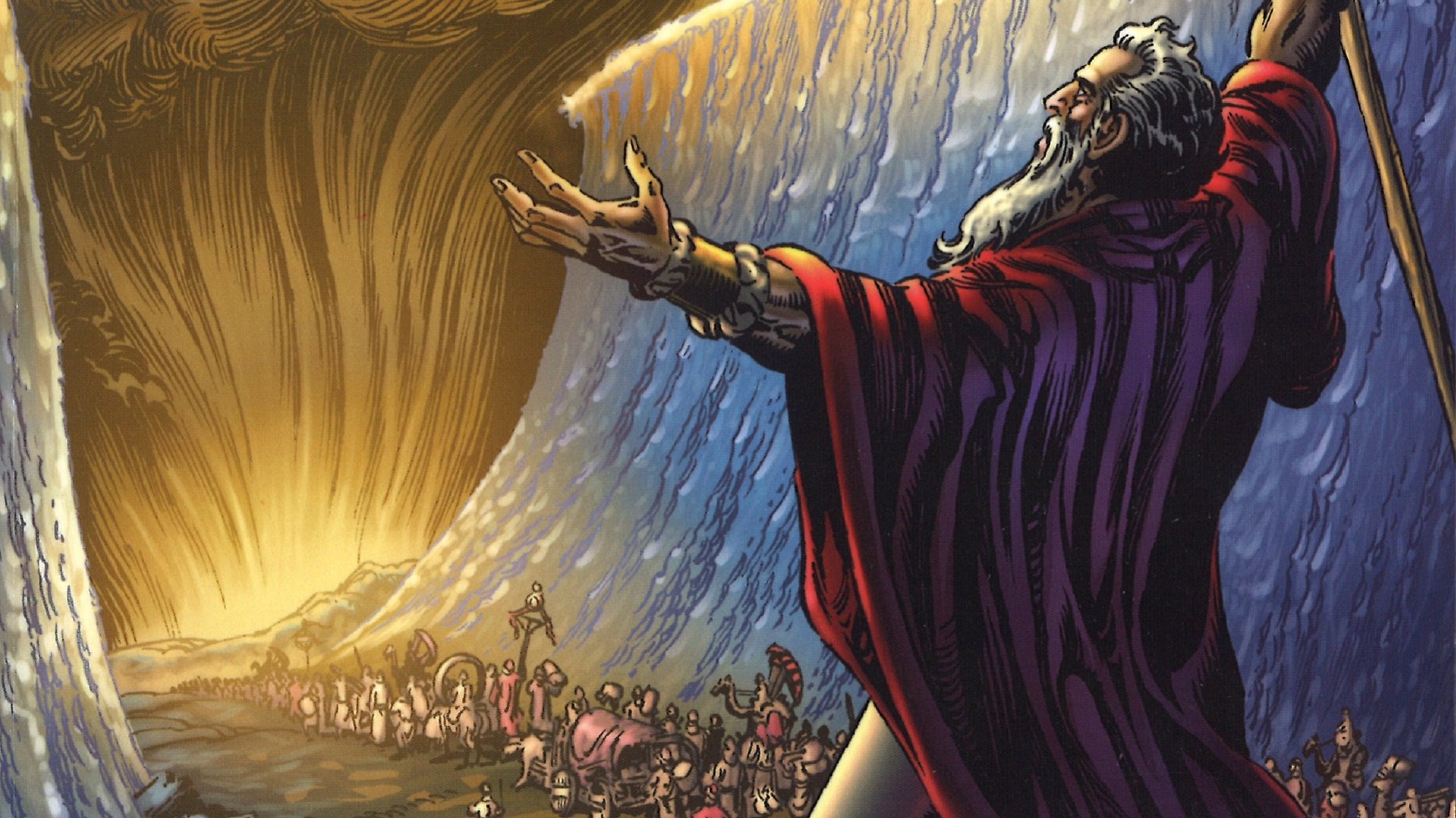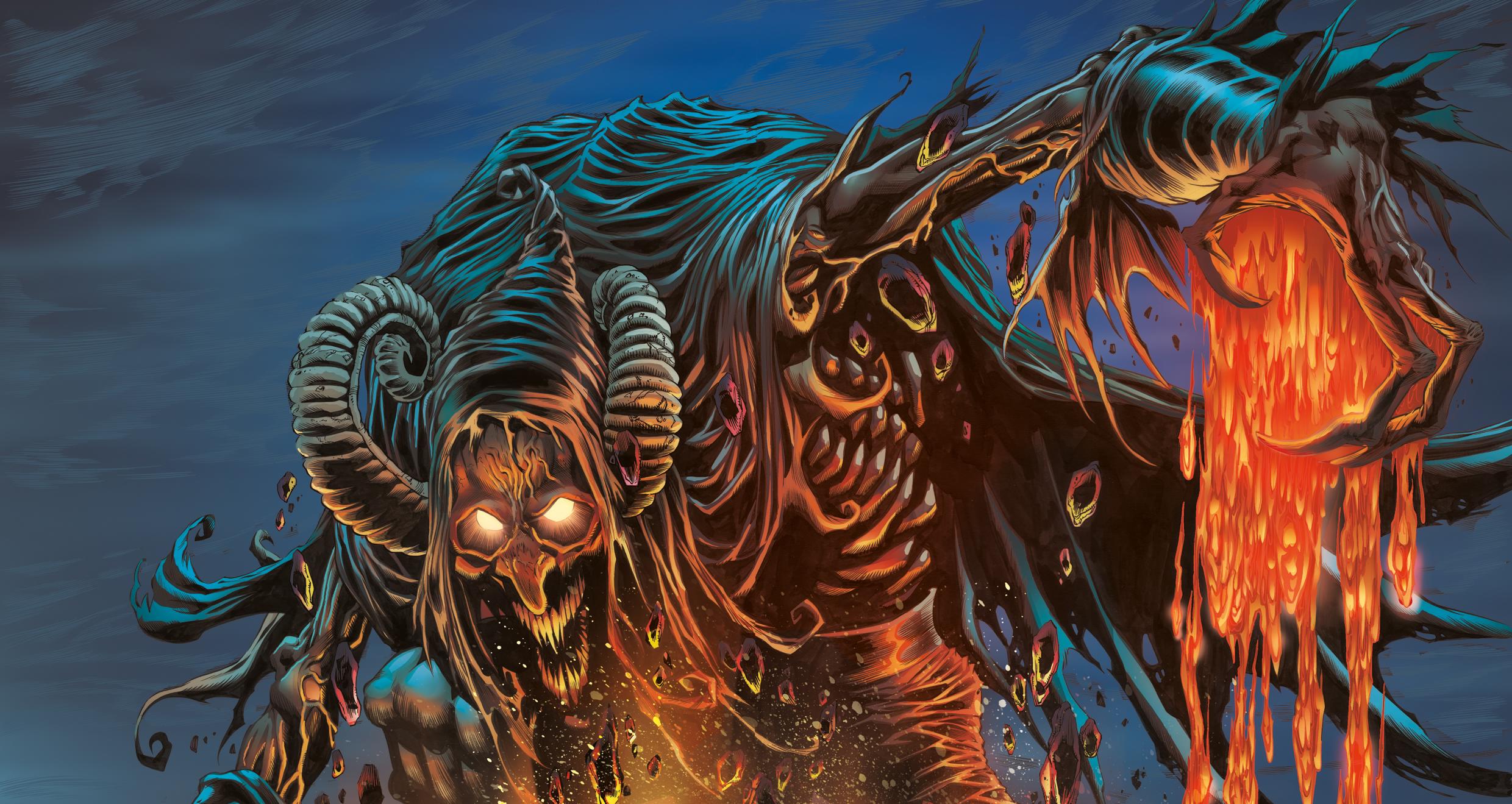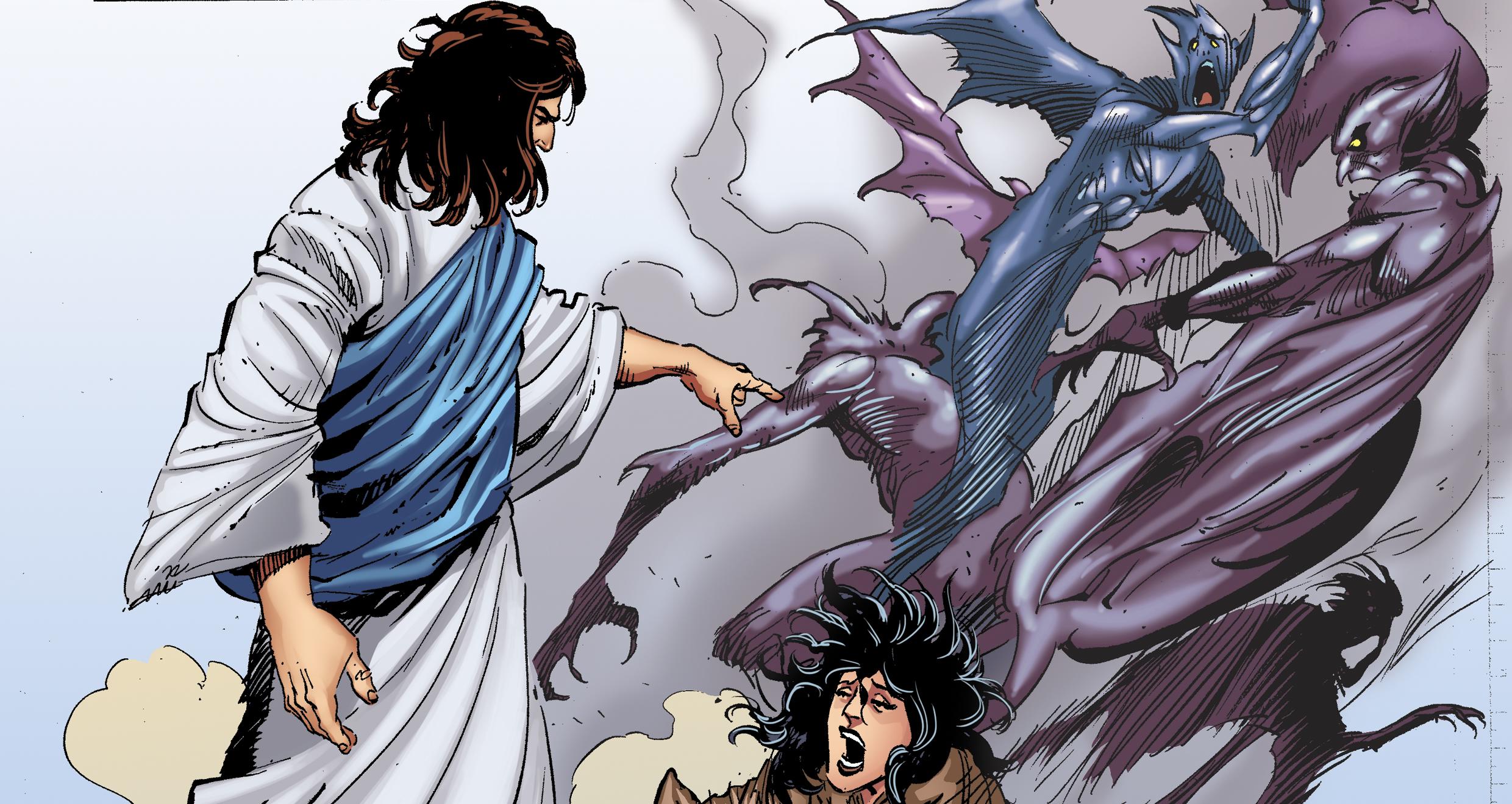For decades, Christians have been adapting Bible stories and Christian-themed content for the comic book format. From The Cross and the Switchblade and the In His Steps series in the ‘70s to the Bibleman series and VeggieTales series in the ‘90s, Christian comic books have continued to occupy a consistent, albeit marginal, space in the ecosystem of evangelical consumer content.
In the fall of 2016, Kingstone Comics accomplished a significant feat, publishing the first full-scale graphic novel adaptation of the Bible. Featuring artwork from veterans of both Marvel and DC Comics that spans over 2,000 pages across three hardcover volumes, The Kingstone Bible is the most ambitious graphic novel biblical adaptation to date.
Kingstone Media CEO Art Ayris, who served as editor for the project, sat down for a conversation with Jelani Greenidge to reflect on the significance of this accomplishment, the mission that motivated it, and the challenges that came with translating sacred Scripture into graphic form.
Can you tell me more about the genesis of this project?
For years, I worked with at-risk kids, and I’ve always struggled to find good materials that were right for them. Working as a pastor, I was very strong with the Bible, so when I began creating Christian comic books, we began to see huge responses to what we were putting out, both domestically and internationally.
I remember once, we went into an apartment complex, and when I was driving there, I thought maybe someone might pick up a few copies. But when I got there, it was like a shark-feeding frenzy—all of these people were just coming out of the woodwork trying to read these comics.
Another time, I was standing in church, and this lady who I’d never met before came up to me and said, “Hey look, I just want you to know: I’m a missionary in Papua New Guinea, and I brought your comic books to one of the tables in my village, and literally everybody was all excited to read them.”
There’s something compelling about the rich imagery of art.
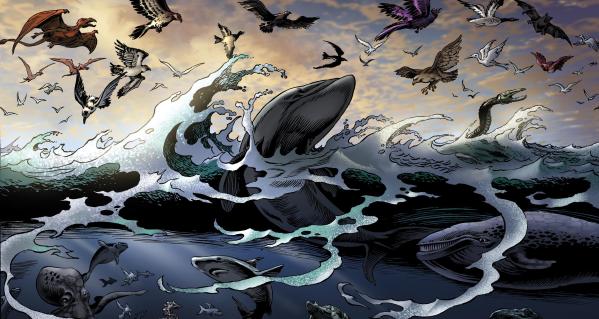 Courtesy Kingstone Comics
Courtesy Kingstone Comics
When it came to actually compiling this huge undertaking, were you doing a lot of focus grouping with youth groups? How did you find the balance between being age appropriate and engaging with adult themes in the biblical content?
Even though I'm a pastor, I didn't really know, until we were going verse by verse and chapter by chapter, how epic this book really is. There's a lot of stuff out there for children, so we really aimed for the preteen, young adult audience.
I read an article in 2009 by a Vatican archaeologist who found all this artwork in the catacombs, and he basically said it's all just a big advertisement trying to get people to repent. And when I would go to Barnes & Noble, I'd see all these kids spread out all over the floor reading graphic novels. So we really felt, with this big problem of biblical literacy, that this would be an effective way to communicate the whole biblical narrative.
Now when it comes to adult themes like murder and genocide, we report it accurately—we just don't go over-the-top with the sexuality and the violence. And when I was doing my initial research and talking with people about it, I found that even the term "graphic novel" was intimidating for parents— sometimes even terrifying. They hear that word "graphic"—
They think it means "explicit," right?
Yeah. It brings up all these connotations of blood and naked people and whatnot.
It took us a steady three or four years of marketing and telling people, "Hey, this guy is a pastor" before we could get our product on Christian bookstore shelves. I'm a Southern Baptist, and even with our denomination's connection to LifeWay, we had to make major art changes eight different times before LifeWay would stock it. There were times they thought, "No, this is too much."
We had to do a careful balancing act throughout. All of our artists have done work for Marvel or DC, where they don't necessarily have these kinds of restrictions. I had to kind of rein them in a bit without sacrificing the real biblical content. I'm really proud of where we ended up.
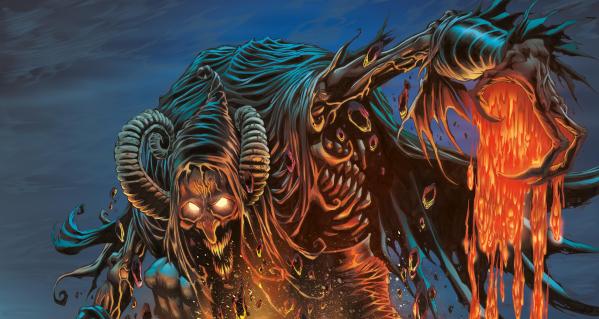 Courtesy Kingstone Comics
Courtesy Kingstone Comics
What are some of the lessons you've learned as a pastor that have served you well as a creative director for Kingstone?
I’ve been everywhere sharing the gospel—jails, schools, hospitals, overseas in India. The biggest thing I’ve seen with evangelism is that there needs to be a connection point for that first opportunity for engagement. And since a lot of people really don’t understand the Scriptures, this is one way of reaching those folks.
But also, if you’ve done any amount of public speaking, you learn to discern pretty quickly when people are engaging or when they’re not. That’s why we are really big believers in marrying graphics with the text. When it comes to the brain, text normally gets stored in short-term memory, but images tend to be stored in long-term memory. There’s a lot of research showing that people can recall much more information and gain a better overall understanding of content if you give them both images and text together, as opposed to either text or images separately.
Here’s an example: There’s a lady who works in one of our ministries who adopted a young girl from a totally dysfunctional family situation—prostitution, drugs, all that. She brought her girl to church, and the girl had brought some form of Christian graphic media. The pastor made reference to some obscure Old Testament story, and asked the congregation, “Who knows the answer?” The deacons who’d been at that church for 50 years had no clue. Nobody knew the answer—except for this girl, because she’d read it in her graphic Bible.
In a graphic novel, the illustrations are there, and the text is there to support that—but you can’t have the same amount of text that you would have in a normal Bible. How did you find ways to simplify, condense, or refine the text to make it work in that format?
There’s a real efficiency in the graphic novel format; you can convey large amounts of information in a very short period of time. So when you read a novel, you can do pages and pages that are just description of a specific place or situation. But in a graphic novel, one panel can cover what might’ve taken several pages to describe.
But of course, another thing we decided to do was to put the Scripture reference right there on the bottom of the page, so that anyone can look up the same Scripture in their own version. We’ve designed it not to replace a normal written Bible, but to be a supplement to it.
So the Kingstone Bible is like a “gateway drug” to biblical literacy?
Somebody who’s never read the Bible before can take the Kingstone Bible, and they can take away a good understanding of the Bible’s major stories, narratives, and doctrines: the character of God, the history of Israel, how it points to Christ in the future, how God feels about sin, and how he responds to disobedience. So yes, it can be that gateway to biblical literacy.
For a lot of people, the Bible is a big, daunting book that’s hard to understand, with all of these hard-to-pronounce names. They don’t get the cultural context, don’t understand the background. So this is a way to help link them into it.
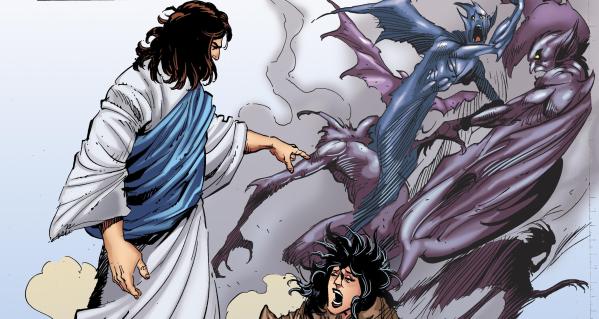 Courtesy Kingstone Comics
Courtesy Kingstone Comics
I’m reminded of Marshall McLuhan’s adage that “the medium is the message.” How do you respond to critics who think the medium of graphic novels is not befitting a holy text?
That criticism has been leveled before, when people think there’s a dumbing-down of the gospel. All I can say is that we’re communicating biblical truth—just in a different format. When Mark and Roma Downey had those Bible specials on the History Channel, a lot Christians stood behind that presentation—and I think ours is actually more biblically accurate.
We have to realize that when we sit in our towers away from humanity, we’re disconnected from how people are really living. Most professing Christians wish they read the Bible more. We feel that our books are no different from any other visual representation of God’s Word, whether it’s visual art, films, TV, plays, or what have you.
Besides the serialization of the biblical narrative that you mentioned earlier, is there anything else about this project that you are particularly proud of?
I just go back to the epic scale of what we were able to accomplish. We really tried to do something of top-notch quality, and I feel that we were able to present a good witness to our collaborators within the comics industry. I’ve had two or three artists who previously worked with Marvel and DC tell us that they’ve never been treated so well as when they worked with us.
And really, more than anything else, I’m just excited that people who have never read the Bible are now having a chance to interact with it in way they haven’t been able to before.
Jelani Greenidge is a freelance writer, speaker, arranger, producer, emcee, stand-up comic, and the associate pastor of Sunset Covenant Church. He writes about the three-way intersection of nerd, hip-hop, and evangelical cultures from his home in Portland, where he lives with his wife Holly, several resilient plants, an XBOX One, and no pets.

